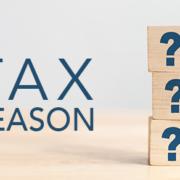The U.S. Department of Labor’s (DOL’s) test for determining whether a worker should be classified as an independent contractor or an employee for purposes of the federal Fair Labor Standards Act (FLSA) has been revised several times over the past decade. Now, the DOL is implementing a new final rule rescinding the employer-friendly test that was developed under the Trump administration. The new, more employee-friendly rule takes effect March 11, 2024.
Role of the new final rule
Even though the DOL’s final rule isn’t necessarily controlling for courts weighing employment status issues, it’s likely to be considered persuasive authority. Moreover, it’ll guide DOL misclassification audits and enforcement actions.
If you’re found to have misclassified employees as independent contractors, you may owe back pay if employees weren’t paid minimum wage or overtime pay, as well as penalties. You also could end up liable for withheld employee benefits and find yourself subject to various federal and state employment laws that apply based on the number of affected employees.
The rescinded test
The Trump administration’s test (known as the 2021 Independent Contractor Rule) focuses primarily on whether, as an “economic reality,” workers are dependent on employers for work or are in business for themselves. It examines five factors. And while no single factor is controlling, the 2021 rule identifies two so-called “core factors” that are deemed most relevant:
- The nature and degree of the employer’s control over the work, and
- The worker’s opportunity for profit and loss.
If both factors suggest the same classification, it’s substantially likely that classification is proper.
The new test
The final new rule closely shadows the proposed rule published in October 2022. According to the DOL, it continues the notion that a worker isn’t an independent contractor if, as a matter of economic reality, the individual is economically dependent on the employer for work. The DOL says the rule aligns with both judicial precedent and its own interpretive guidance prior to 2021.
Specifically, the final rule enumerates six factors that will guide DOL analysis of whether a worker is an employee under the FLSA:
- The worker’s opportunity for profit or loss depending on managerial skill (the lack of such opportunity suggests employee status),
- Investments by the worker and the potential employer (if the worker makes similar types of investments as the employer, even on a smaller scale, it suggests independent contractor status),
- Degree of permanence of the work relationship (an indefinite, continuous or exclusive relationship suggests employee status),
- The employer’s nature and degree of control, whether exercised or just reserved (control over the performance of the work and the relationship’s economic aspects suggests employee status),
- Extent to which the work performed is an integral part of the employer’s business (if the work is critical, necessary or central to the principal business, the worker is likely an employee), and
- The worker’s skill and initiative (if the worker brings specialized skills and uses them in connection with business-like initiative, the worker is likely an independent contractor).
In contrast to the 2021 rule, all factors will be weighed — no single factor or set of factors will automatically determine a worker’s status.
The final new rule does make some modifications and clarifications to the proposed rule. For example, it explains that actions that an employer takes solely to comply with specific and applicable federal, state, tribal or local laws or regulations don’t indicate “control” suggestive of employee status. But those that go beyond compliance and instead serve the employer’s own compliance methods, safety, quality control, or contractual or customer service standards may do so.
The final rule also recognizes that a lack of permanence in a work relationship can sometimes be due to operational characteristics unique or intrinsic to particular businesses or industries and the workers they employ. The relevant question is whether the lack of permanence is due to workers exercising their own independent business initiative, which indicates independent contractor status. On the other hand, the seasonal or temporary nature of work alone doesn’t necessarily indicate independent contractor classification.
The return, and clarification, of the factor related to whether the work is integral to the business also is notable. The 2021 rule includes a noncore factor that asks only whether the work was part of an integrated unit of production. The final new rule focuses on whether the business function the worker performs is an integral part of the business.
For tax purposes
In a series of Q&As, the DOL addressed the question: “Can an individual be an employee for FLSA purposes even if he or she is an independent contractor for tax purposes?” The answer is yes.
The DOL explained that the IRS applies its version of the common law control test to analyze if a worker is an employee or independent contractor for tax purposes. While the DOL considers many of the same factors as the IRS, it added that “the economic reality test for FLSA purposes is based on a specific definition of ‘employ’ in the FLSA, which provides that employers ‘employ’ workers if they ‘suffer or permit’ them to work.”
In court cases, this language has been interpreted to be broader than the common law control test. Therefore, some workers who may be classified as contractors for tax purposes may be employees for FLSA purposes because, as a matter of economic reality, they’re economically dependent on the employers for work.
Next steps
Not surprisingly, the DOL’s final new rule is already facing court challenges. Nonetheless, you should review your work relationships if you use freelancers and other independent contractors and make any appropriate changes. Remember, too, that states can have different tests, some of which are more stringent than the DOL’s final rule. Contact your employment attorney if you have questions about the DOL’s new rule. We can assist with any issues you may have regarding independent contractor status for tax purposes.
© 2024












